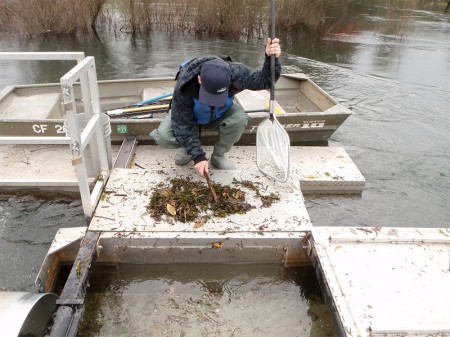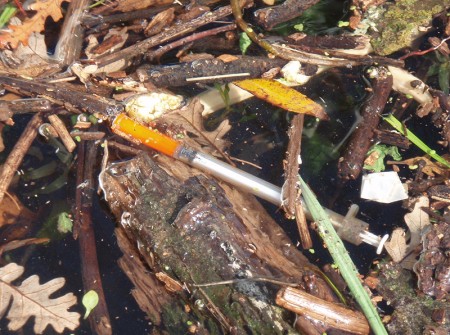Friday January 6, 2012
As we begin our annual monitoring of the downstream migration of salmon and steelhead, we have to remind ourselves of the hazards we face. Each winter we install multiple rotary screw traps in rivers throughout Central California to sample and enumerate outmigrating juvenile anadromous salmonids. Rotary screw traps use a large, rotating cone to funnel a portion of the downstream migrating fish into an underwater holding tank. The traps typically operate 24 hours a day, requiring fisheries technicians to clean out the live-well and process the catch at lease once daily, and often more frequently during periods of abundant catch or heavy debris. Unfortunately, some of the traps are located downstream of urban areas and they are prone to catching all kinds of discarded items such as glass bottles, tin cans, hypodermic needles and things we won’t mention here. We always take precautions when we clean out the fish traps to avoid getting cut or punctured by sharp hazards.


